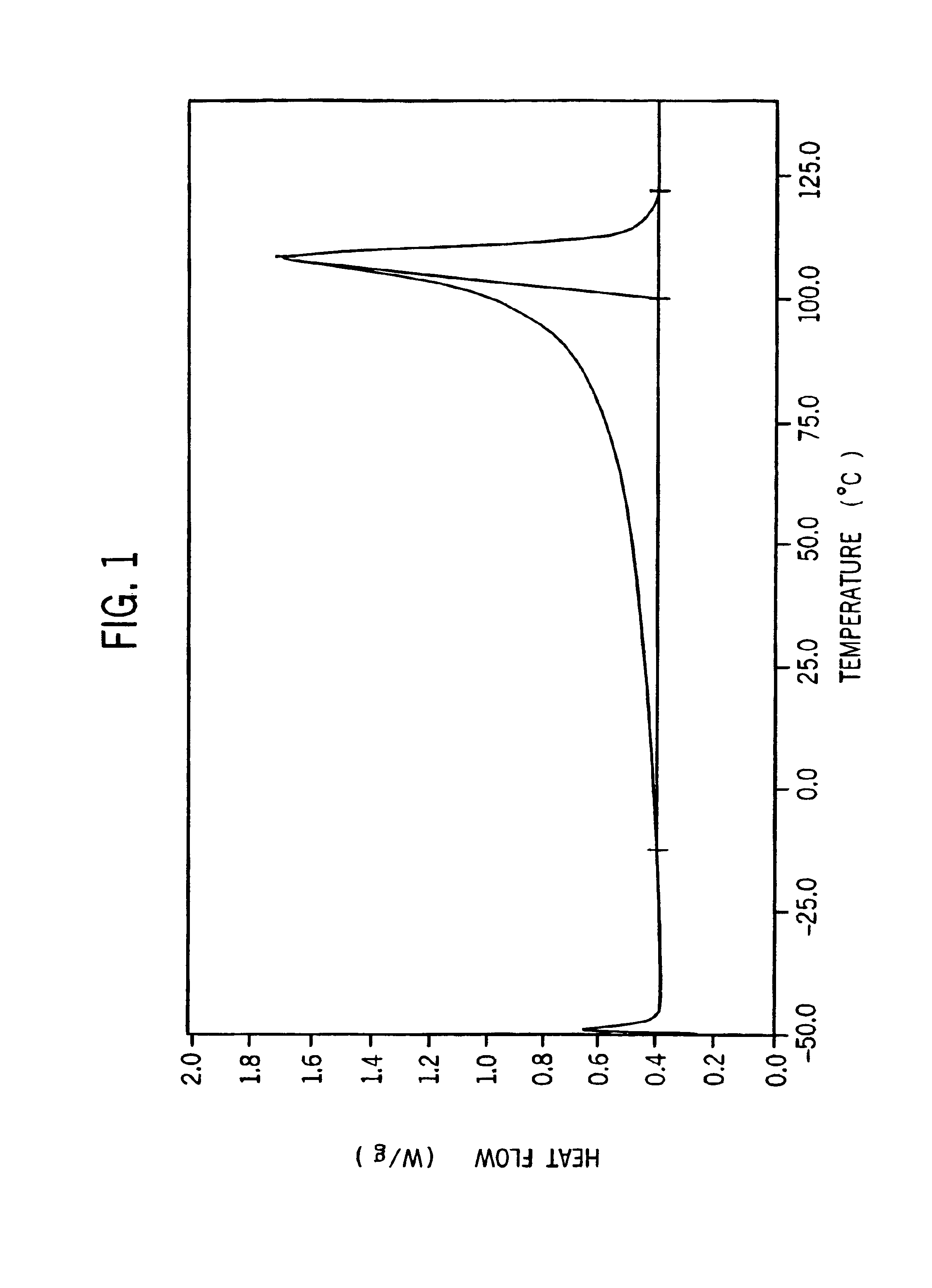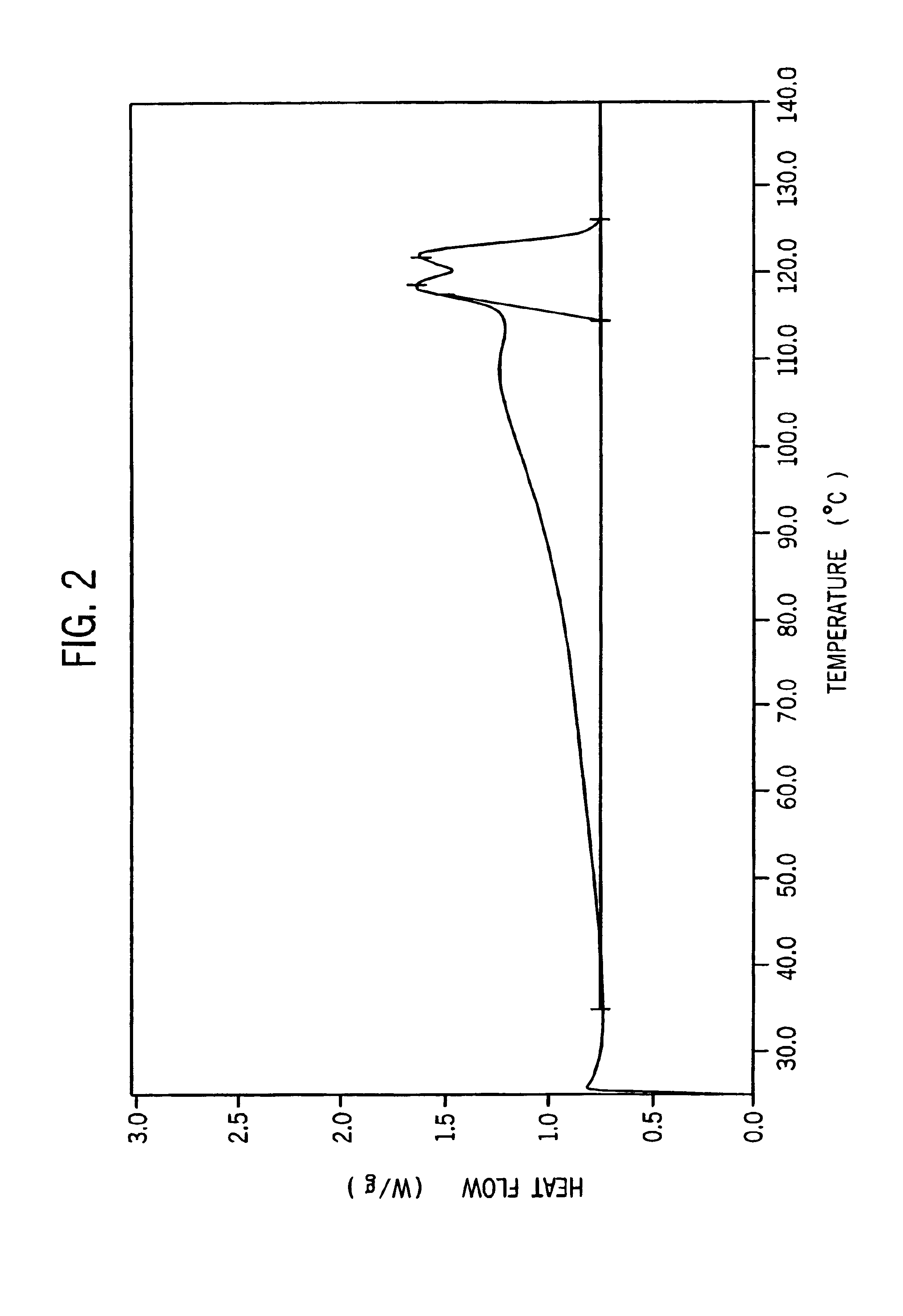Ethylene interpolymer polymerizations
a technology of ethylene interpolymer and polymerization, which is applied in the field of manufacturing processes of ethylene interpolymer products, can solve the problems of lowering tensile strength, affecting the ability of polymers to melt blended cost effectively, and affecting the physical properties of the final product, so as to achieve the effect of increasing the crystallization temperatur
- Summary
- Abstract
- Description
- Claims
- Application Information
AI Technical Summary
Benefits of technology
Problems solved by technology
Method used
Image
Examples
example 13
[0147 is a comparative example using only a single constrained geometry catalyst (MAO:Ti ratio of about 500:1) at a single reaction temperature (110° C.).
example 14
[0148 illustrates the use of a single activated constrained geometry. (Titanium at MAO:Ti ratio of about 500:1) catalyst at two different reactor temperatures (110° C. and 150° C.).
[0149]Examples 15-19 show ethylene / 1-octene interpolymerizations using mixed constrained geometry catalysts (Ti and Zr) at MAO:total metal concentrations of 350:1.
[0150]Examples 20-22 show data relating to interpolymerizations of ethylene with tetradecene, octadecene and cyclooctene, respectively. For Examples 20 and 21, the MAO:total metal concentration is about 500:1 while for Example 22 the MAO:total metal concentration is about 750:1.
[0151]Examples 23-25 describe ethylene / 1-propene / 1-octene terpolymer interpolymerizations, each using a single injection of a mixture of two constrained geometry catalysts (titanium and zirconium), each using methylaluminoxane as a cocatalyst to form the activated catalyst mixture.
[0152]
TABLE 4Polymerizations using 2 constrained geometrycatalysts having differing reactivi...
PUM
| Property | Measurement | Unit |
|---|---|---|
| melting point | aaaaa | aaaaa |
| weight percent | aaaaa | aaaaa |
| weight percent | aaaaa | aaaaa |
Abstract
Description
Claims
Application Information
 Login to View More
Login to View More - R&D
- Intellectual Property
- Life Sciences
- Materials
- Tech Scout
- Unparalleled Data Quality
- Higher Quality Content
- 60% Fewer Hallucinations
Browse by: Latest US Patents, China's latest patents, Technical Efficacy Thesaurus, Application Domain, Technology Topic, Popular Technical Reports.
© 2025 PatSnap. All rights reserved.Legal|Privacy policy|Modern Slavery Act Transparency Statement|Sitemap|About US| Contact US: help@patsnap.com



